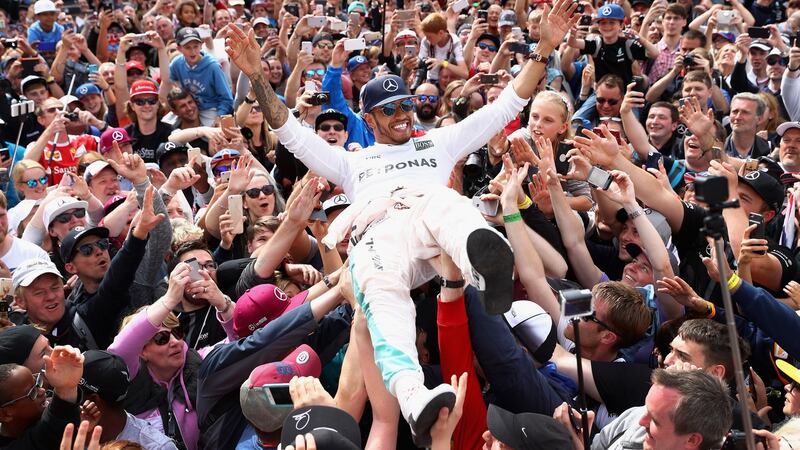Formula 1 is in crisis. With another year of domination by the Mercedes team on the cards the viewing public have been switching off in droves.
Part of the thrill of F1 has been its danger. Even though few genuine fans tune in for the accidents, brave young men putting their lives on the line for sporting endeavour has an obvious, if somewhat distasteful, gladiatorial glamour.
Forty years ago the attitude was that if you were taking part you knew the risks, and death behind the wheel was a regular occurrence.

That ended with the shocking deaths of Ayrton Senna and Roland Ratzenberger, at the San Marino Grand Prix, in 1994. Those deaths were beamed in live and horrifying colour into millions of homes.
Tracks were altered, cars redesigned, safety systems and medical centres improved. The result? No on-track deaths since 1994 until last year, when the car of the young French driver Jules Bianchi slid off a wet track and hit a tractor recovering another damaged car. He died some months later of terrible head injuries.
Some have suggested that the safety moves have gone too far, and the glamorous sheen of danger, so crucial to making the sport exciting again, has been lost. The Ferrari star Kimi Raikkonen told French TV last year: "I'm sure something has to be done to make it more exciting to people to watch and also to really see the speed and make it a little bit more dangerous. It is part of the game."
No less a luminary than Stirling Moss said that F1 had become too sanitised – and "to make it the sport it is, it needs to be dangerous".
Track
We have a home-grown talent who may have a more rounded perspective on such things. Belfast’s
Martin Donnelly
was once a rising star in F1, driving for the famed Lotus team.
In 1990, at the Portuguese Grand Prix, it all went terribly wrong. His Lotus-Lamborghini 102 speared off the Jerez track and struck the barriers at more than 240km/h. Donnelly was thrown, still strapped to a fragment of the cockpit, across the tarmac like a rag doll. He came perilously close to having his right leg amputated, and he still walks with a severe limp.
Donnelly was forced to retire from single-seater racing, but he continued to race in other formulas, ran his own team for a time and is now a driver steward at F1 events, helping the officials to see the drivers’ perspective when adjudicating on incidents and accidents.
“I would say, when I was a driver, you can’t be popular, you can’t be friendly with everyone. Now I’m a steward I’m even less popular. The surest decision was that you couldn’t apportion blame.”
He was the judge before whom Lewis Hamilton and Nico Rosberg were hauled for crashing into one another at this year's Spanish Grand Prix. "When Lewis and Nico took themselves off they had to come and see me – and I was the nasty headmaster," he says. "I gave them both a severe chastising – they caused €16 million or €17 million in accident damage, they lost their constructors' points money, 550 staff at Mercedes F1 lost their bonus money, all that negative press, I think they finally learned about the first lap."
Protect drivers
On the safety issue he is much more forthright: don’t roll back the clock. “Drivers are gladiators. There’s no one that holds a gun to their heads and says, ‘You have to go and drive a racing car today.’
“If they don’t drive, of course, the team might terminate their contract, but you have to protect drivers from themselves.
“I very much think we should still be excited about F1. It’s the pinnacle of technology and the pinnacle of the sport. Unfortunately it’s one of the world’s most expensive sports, but even so I can’t wait to get home tonight and get the telly on and and watch the highlights.
“And it shows in modern road cars: the connection with the racing technology comes through and makes them more exciting.”
Donnelly’s words ring true: one of the greatest achievements in modern racing has been to take a sport built around wheel-to-wheel racing of 900hp-plus open-wheeled projectiles and make it so safe that a death or even a serious injury is remarkable for its rarity.
Donnelly could have died in Jerez. That he didn’t is proof that rolling back on safety isn’t the way to make F1 exciting again.











